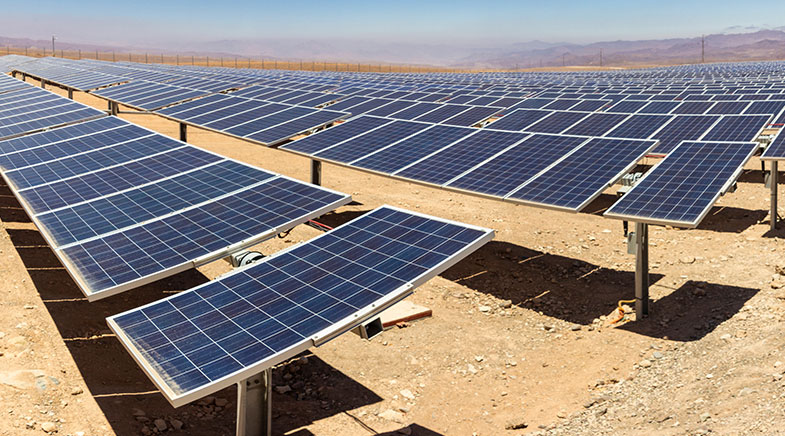Waterless way of keeping solar panels dust-free
-
- from Shaastra :: vol 01 issue 03 :: May - Jun 2022

Just how does one dust thousands of panels in a solar farm?
With the growing demand for power from non-conventional sources — it is estimated that about 10% of electricity produced in the world will be solar by 2030 — the global focus is on deserts.
Many of the solar farms in the future are expected to be located in dry regions where sunlight is abundant. But a major problem in deserts is dust accumulation, which can substantially reduce solar power output. Most solar power parks currently use water to clean solar panels to ensure optimal production of power.
And that is a lot of water. According to a conservative estimate, nearly 40 billion litres of clean water — which can quench the thirst of 2 million people worldwide — are currently used to clean solar panels per year.
Attempts have been made to introduce waterless cleaning, but these methods are largely labour intensive and have often resulted in scratches on the panels, which again reduce the efficiency of power generation.
The system uses electrostatic repulsion to cause dust particles to detach and virtually leap off the panel's surface, without the need for water or brushes.
But here's the good news. Researchers at the Massachusetts Institute of Technology (MIT) have devised a way of automatically cleaning solar panels, or the mirrors of solar thermal plants, in a waterless, no-contact system that can significantly tackle the dust problem. The researchers — MIT graduate student Sreedath Panat and Professor of Mechanical Engineering Kripa Varanasi — described the process in a recent paper in the journal Science Advances.
The system uses electrostatic repulsion to cause dust particles to detach and virtually leap off the panel's surface, without the need for water or brushes. To activate the system, a simple electrode passes just above the solar panel's surface, imparting an electrical charge to the dust particles, which are then repelled by a charge applied to the panel itself. The system can be operated automatically using an electric motor and guide rails along the side of the panel.
Lab tests conducted by Panat and Varanasi showed that the drop in energy output from the panels is steep, occurs at the very beginning of the process of dust accumulation, and can easily mark a 30% reduction in output after a month without cleaning. Even a 1% reduction in power, for a 150-megawatt solar installation, they calculated, could result in a $200,000 loss in annual revenue. The researchers say that globally, a 3-4% reduction in power output from solar plants amounts to an annual loss of $3.3 billion-$5.5 billion.
"The water-based solar panel cleaning process accounts for over 10% of operation and maintenance costs. This is expected to increase to up to 25% in 10 years as fresh water sourcing becomes increasingly more expensive," says Panat.
Have a
story idea?
Tell us.
Do you have a recent research paper or an idea for a science/technology-themed article that you'd like to tell us about?
GET IN TOUCH














